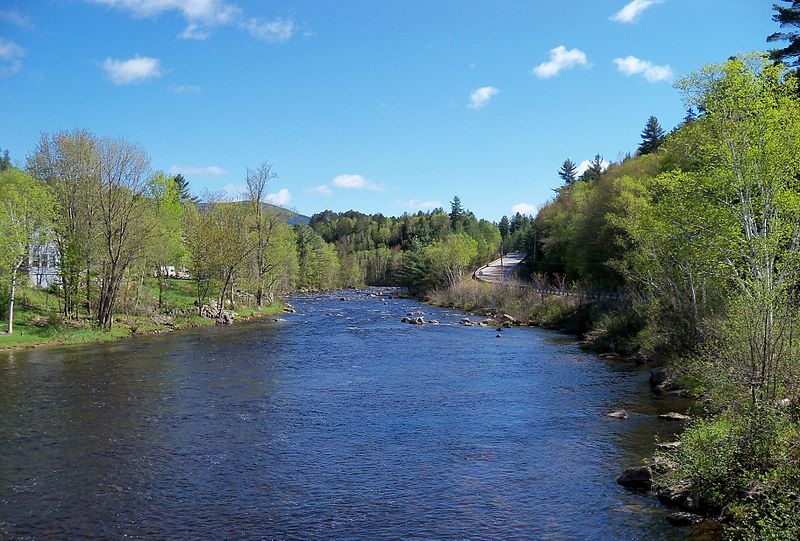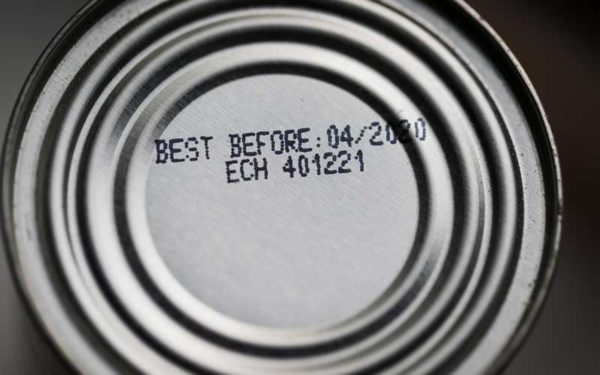
Casella Waste's landfill in Bethlehem is polluting the Ammonoosuc River. Photo: Photo: Alexius Horatius via Creative Commons
Last month, on a covered bridge spanning New Hampshire’s Ammonoosuc River, I stood beside our partners from Toxics Action Center as we announced the filing of a federal lawsuit against Casella Waste Systems for ongoing water pollution from its massive landfill in Bethlehem, New Hampshire. Our suit tackles Casella’s longstanding, and continuing, violations of the Clean Water Act – a law that’s essential to restoring and protecting our lakes and bays, and, of course, rivers like the Ammonoosuc.
It’s an unfortunate fact that at some point all landfills leak (along with their many other environmental and community impacts), putting our groundwater, rivers, and even drinking water at risk. Casella’s Bethlehem landfill is no exception, discharging pollutants such as 1,4 dioxane (a likely carcinogen), iron, and manganese through a “seep” and drainage channel into one of the North Country’s iconic waterways – the Ammonoosuc River. People who cherish the river have – understandably – had enough, and CLF is pleased to be a part of this effort to hold Casella accountable and ensure that the Ammonoosuc (Abenaki for “fish place”) remains fishable and swimmable for all.
A Symptom of a Bigger Problem
Casella’s pollution of the Ammonoosuc River is a sign of a much larger problem – namely, the environmental and community harm caused by a region-wide approach to managing our waste that relies far too heavily on burying and burning it.
This bigger solid waste problem can and must be solved. A Zero Waste approach that prioritizes reducing the amount of waste we generate is the first, most important strategy in tackling it. But a Zero Waste strategy can’t stop there. It must also include effective recycling and composting programs – treating waste not as something to be discarded but as a resource to be turned into useable materials and products.
Taking meaningful steps in these first two areas would help us eliminate about 80 percent of our solid waste stream. We could eliminate the remaining waste by banning certain items and materials, such as single-use plastic grocery bags, plastic straws, polystyrene, a.k.a. Styrofoam. We could also start programs that place more responsibility for end-user waste on producers. For example, if producers were required to take back the waste they generate when items – like batteries, paints, and electronics – cannot be easily recycled or reused, they would be incentivized to redesign and reduce these materials.
Unfortunately, New England as a region is not making nearly enough progress in implementing any of these solutions. As a result, we’re exposing communities (like the people in Bethlehem) and natural resources (like the Ammonoosuc River) to unnecessary harm. And in the process, as we transport, bury, and burn waste around the region, we’re generating more of the pollution – including methane – that’s fueling our changing climate.
Landfill Expansions are Not the Answer
Here in New Hampshire, the State has adopted a policy that favors source reduction, recycling, and composting over waste disposal and ranks landfills as the least favorable approach to managing solid waste. It also established – in 1996 – the goal of diverting at least 40 percent of our waste (by weight) away from landfills and incinerators, through strategies such as source reduction, recycling, re-use, and composting.
Unfortunately, we haven’t made nearly enough progress in achieving this goal. And, of course, we can and must do better than achieving a 40 percent reduction in waste that gets burned or buried. If the status quo persists – with landfills in New Hampshire seeking major expansions – we’ll never get there. Instead, waste reduction and recycling efforts – both in New Hampshire and elsewhere in New England – will continue to languish. And our communities and environment will continue to bear the toxic burdens that come with burying and burning our trash.
That’s why we oppose the proposed 58-acre expansion of Waste Management Inc.’s Turnkey landfill in Rochester. And it’s why we support local efforts in Bethlehem to resist continued efforts by Casella to expand its landfill there.
We hope you’ll follow our ongoing Zero Waste efforts at CLF, and we look forward to providing updates on our work to stop illegal discharges of waste pollution into the Ammonoosuc River.



